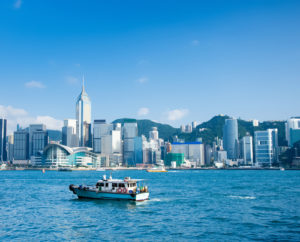Modern capitalism’s root can be found in the widespread colonialism by European nations which started in about the 14th century. It has now become a necessary tool for an economy to flourish. Capitalism is a system that’s widely loved and hated at the same time. But what is Capitalism? It is defined as a socio-economic system where both the means of production and the trade of the products are under the control of private participants.
Impact
The effect that capitalism has on your life relies upon your position, whether you are a laborer or at an upper-managerial level. For the one with whom the ownership of an organization lies and who utilizes labor force to drive production, capitalism may bode well: Higher the profits, higher the resources to share with the laborers, which in turn improves everybody’s way of life.
 It’s totally founded on the guiding principle of supply and demand, which means that the customer is king. However, the why capitalism often comes under flare is because more often than not businesses try to maximize profits for themselves rather than for redistribution amongst its workers; capitalism is a tremendous driver of socio-economic disparity.
It’s totally founded on the guiding principle of supply and demand, which means that the customer is king. However, the why capitalism often comes under flare is because more often than not businesses try to maximize profits for themselves rather than for redistribution amongst its workers; capitalism is a tremendous driver of socio-economic disparity.
Types of Capitalism
- Crony capitalism refers to a set-up where big businesses pay off people working for the government, politicians in return for favors like Government contracts or tax benefits.
- Dr. Edward Younkins, creator of Capitalism and Commerce, had laid down the three fundamentals of democratic capitalism: (1) an economy dependent on open markets and economic impetuses for businesses, (2) a functional democracy, and (3) traditional liberalism with a healthy respect for pluralism as each human is unique from the other and each is entitled to his/her opinions. A prime example of such a system is the USA.
- Laissez-faire capitalism: This is where the economy is left entirely at the disposal of the private players in the market. They call the shots regarding all economic activities, drawing a line between economy and state.
It has been said that the concentration of money, capital, energy, and other resources within the hands of a few, had led to the Great Depression in 1929.
- Mercantilism is an illustration of an early type of capitalism, which started with the
 European colonial expansion in the early to the mid-16th century. Mercantilism fuses private interests, state interests, and the establishment of colonies to dump their produce.
European colonial expansion in the early to the mid-16th century. Mercantilism fuses private interests, state interests, and the establishment of colonies to dump their produce. - Finance capitalism is where profit is achieved through the buying and selling of financial products like bonds, stocks, currency, and other derivatives. Loans are given at a fixed rate of interest also comes under finance capitalism.
- A social market economy implies a financial framework where government mediation is limited. Nonetheless, the state offers a ton of amenities for the unemployed, the working class.
Sweden comes under such a framework. Numerous residents see themselves as recipients of a multiplicity of government assistance. A common welfare system that works towards the benefit of all.
- State capitalism is where the government regulates the economic system and has partial or complete ownership of certain sectors.
An example of state capitalism would be erstwhile Germany, where the government controlled the inventory and output of production during World War II. A modern example would be China.
-
The United States of America
The country of the United States has become a definitive example of modern capitalism. In the US one can set off their businesses with humble beginnings and can very well turn it into a global conglomerate. Americans are motivated by winning and monetary success. A capitalist country allows private players to keep track of what makes a profit and how much profit it makes. Thereby, playing along with the whims of the market and driving innovation to rush to bridge the gap between demand and supply, should there arise one.
However, there are also monopolies within the industries and most of these are old money,  i.e. family-run monopolies. Being existent for a long time, these monopolies have a strong and loyal customer base amidst a perpetually competitive market.
i.e. family-run monopolies. Being existent for a long time, these monopolies have a strong and loyal customer base amidst a perpetually competitive market.
-
Japan
Japanese economic reforms started in the 90s with the adoption of a US-management style of Capitalism where in order to battle the economic downturn, layoffs are conducted. Along with this, the Keiretsu networks, which are a grouping of enterprises wherein member companies buy holdings in each other’s company as safety to net against recession or takeovers, also added to its prosperity. Japan’s capitalistic system is built on more specialization and less diversification. By focusing on key industries, Japan has become a market leader in telecommunications, digital technology, etc. Plus, with incentives for loyalty, Japanese companies tend to retain employees for the long term.
-
Hong Kong
Hong Kong’s capitalist economy is a highly thriving one. In the Index of Economic Freedom, which has been published since 1995 by The Wall Street Journal and the Heritage Foundation, Hong Kong has had always enjoyed the top position in terms of economic liberty; with the low-income tax rate, minimal state intervention, negligible port duties, and a well-established international market.
Hong Kong’s GDP has grown 180 times within a span of 3 decades (from the 60s to the 90s). According to 2011 data, its purchasing power parity was higher than that of the USA. All owing to its strong banking system, anti-corruption laws, zero public debt, and 400-plus billion USD of foreign reserves.
-
India
Like Japan, India’s capitalistic venture to an open market system started in the early nineties with the LPG (Liberalization, Privatization, and Globalization) policy. While multinational corporations look towards India for their offshore needs, the limitation is the huge population. The labor, while plenty, is not entirely skilled. At the same time the population being huge, makes it a potential market for investors.
However, with an outdated caste system and uneven distribution of wealth, the poor are born poor and stay poor while the rich get richer. At the upper tiers of society, India produces highly qualified graduates and brilliant minds who go on to work at the helm of prestigious institutions and organizations.
-
China
The days of Mao Zedong and the Red Army are long gone. While there might be contenders to the claim, China is a capitalist country. Owing to large scale changes in economic structures since the 1970s, the Chinese economy has been welcoming more and more private participants, becoming a hybrid of capitalism and communism. While banking is  under state control, it has opened up its state for foreign direct investment and even allows state companies to invest overseas.
under state control, it has opened up its state for foreign direct investment and even allows state companies to invest overseas.
There is reason to be optimistic that the world is moving towards economic liberalism. In an article called “The Case for Capitalism” published by the journal, The Catalyst, the author refers to statistics from HumanProgress.Org which states that life expectancy has risen by 29% and infant mortality has fallen by 72% over the past fifty years. And average income has gone up, globally, from around USD4000 to USD 17500 within the same time.
Research has proven that countries that pursue a more liberated economic structure enjoy a better socio-economic existence. Capitalistic system pillared on liberalism, supplanted by human rights, anti-corruption measures, and a level playing field will deliver prosperity.

















